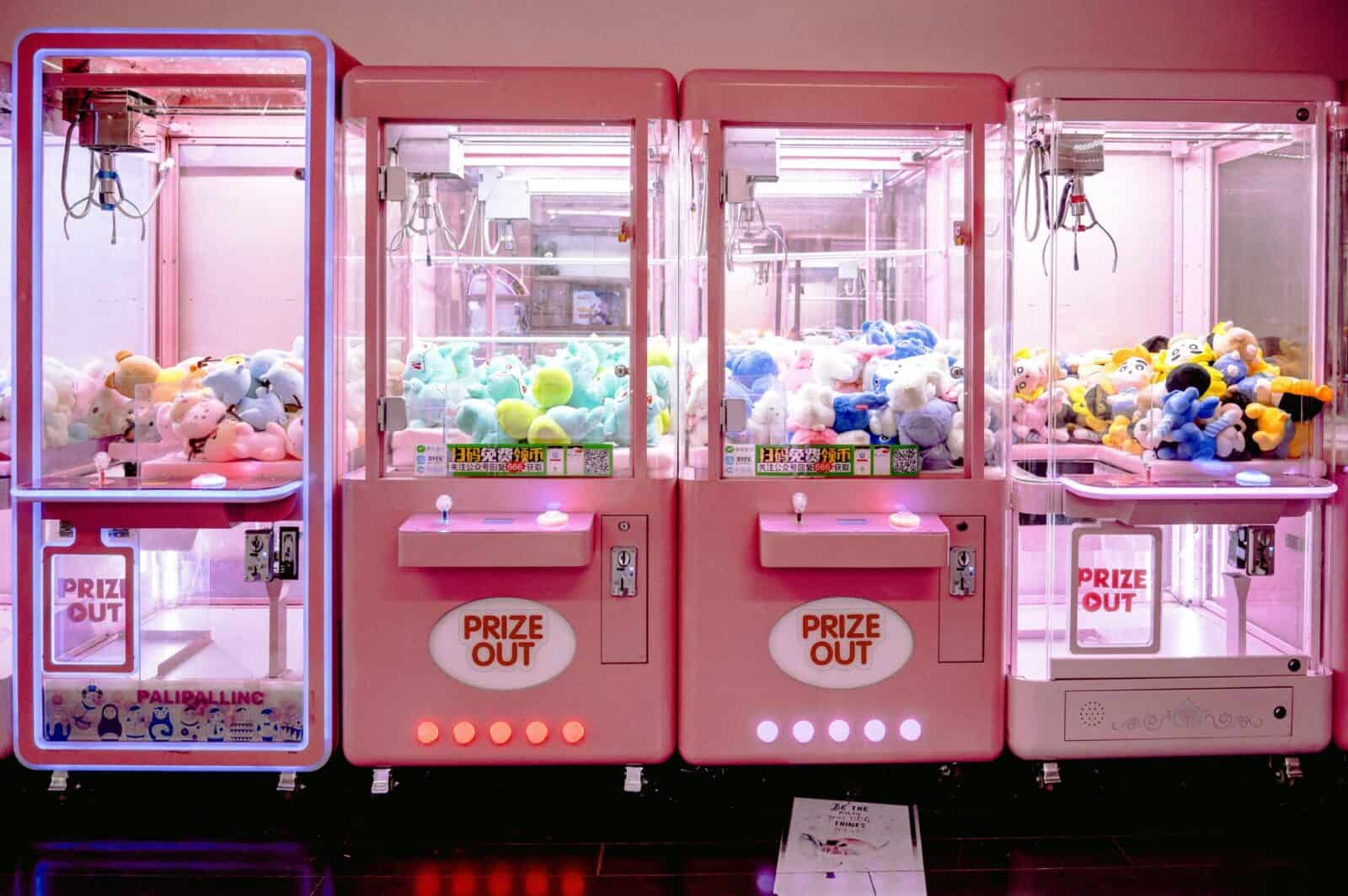Introduction à la Candy Bar Marché
Le marché mondial des barres chocolatées est un secteur important du marché de la confiserie, stimulé par les tendances et les préférences des consommateurs pour les friandises sucrées et indulgentes. Bien que l'on observe un intérêt croissant pour les options de chocolat noir, le chocolat au lait reste un produit de base sur le marché des barres chocolatées, aux côtés du chocolat noir et d'autres variétés.
Des acteurs clés comme Hershey Company et d'autres grandes entreprises opérant sur le marché contribuent à sa croissance substantielle. La consolidation du marché, par le biais de fusions, d'acquisitions et de partenariats entre les principales entreprises, façonne la structure et le paysage concurrentiel du marché des barres chocolatées.
La taille du marché est influencée par des facteurs tels que les dépenses de consommation élevées, en particulier en Amérique du Nord, et la demande croissante d'offres haut de gamme et d'alternatives plus saines. Les nouvelles tendances telles que l'innovation des produits, la premiumisation et l'évolution des préférences des consommateurs devraient influencer le marché dans les années à venir.
Analyse du marché
La croissance du marché devrait être due à l'évolution des préférences des consommateurs, qui privilégient les barres chocolatées biologiques, les barres chocolatées fonctionnelles et les options de chocolat plus noir.
La personnalisation des barres chocolatées et la demande croissante de produits plus sains et de qualité supérieure sont des tendances clés qui influencent considérablement la croissance du marché. Les achats impulsifs, en particulier aux caisses et dans les magasins de proximité, continuent de jouer un rôle important dans les ventes de barres chocolatées et influencent la croissance du marché.
Les consommateurs soucieux de leur santé stimulent la demande d'alternatives plus saines, ce qui a un impact sur la dynamique du marché et le paysage concurrentiel.
Le marché de la confiserie, y compris les barres chocolatées, devrait connaître une innovation continue en matière de produits, les entreprises s'adaptant à l'évolution des demandes et des préférences des consommateurs. L'innovation permanente en matière d'arômes, d'ingrédients, d'emballage et de technologie est un moteur de l'évolution et de la compétitivité du marché des barres chocolatées.
Tendances et préférences des consommateurs
Les tendances de consommation indiquent une évolution vers des options plus saines, avec un intérêt croissant pour les barres chocolatées biologiques et fonctionnelles.
Les préférences des consommateurs sont diverses, allant des barres chocolatées classiques aux barres chocolatées artisanales, ce qui influence la segmentation du marché et le développement des produits. Comprendre et satisfaire les préférences locales et régionales est essentiel pour les entreprises qui souhaitent conquérir des parts de marché et innover en matière de produits.
Parmi les principales tendances, citons la croissance du commerce électronique et des canaux de vente en ligne, qui modifient la manière dont les barres chocolatées sont commercialisées et distribuées.
La fidélité à la marque est favorisée par l'innovation en matière de produits, les stratégies de marketing et l'assurance qualité, ce qui aide les entreprises établies à conserver leur part de marché.
La demande saisonnière pendant les fêtes et les occasions spéciales stimule considérablement les ventes de barres chocolatées et façonne les stratégies de marketing.
Produits de confiserie
Le marché de la confiserie englobe une gamme variée de produits, notamment les sucreries, les bonbons au chocolat et les bonbons sans chocolat. Le marché comprend également les barres à grignoter, qui se positionnent comme des alternatives plus saines ou fonctionnelles aux barres chocolatées traditionnelles. Les modes de consommation des confiseries évoluent en raison des tendances en matière de santé, des préférences culturelles et de l'introduction de nouveaux produits, certains marchés, comme le Mexique, affichant des niveaux de consommation élevés et croissants.
L'aperçu du marché des confiseries montre que les barres chocolatées restent un produit de base, mais qu'il existe également une forte demande de barres non chocolatées et d'autres produits de confiserie.
La pénétration et l'expansion du marché sont favorisées par le lancement de produits innovants et l'adaptation des produits aux préférences spécifiques des consommateurs.
Aperçu du marché des bonbons
Le marché mondial des barres chocolatées se caractérise par une croissance substantielle, tirée par les marchés émergents et l'augmentation des revenus disponibles dans des régions comme l'Asie-Pacifique.
La dynamique du marché est influencée par des facteurs économiques, les dépenses des consommateurs et l'expansion des infrastructures de vente au détail, y compris les magasins de proximité et les magasins spécialisés. L'expansion des réseaux de distribution permet aux entreprises d'atteindre de nouveaux marchés, d'améliorer les infrastructures de vente au détail, de soutenir l'innovation des produits et l'expansion des marchés régionaux.
La position des grandes entreprises sur le marché est renforcée par leur capacité à innover et à répondre à l'évolution des préférences des consommateurs, notamment à la demande d'options haut de gamme et plus saines. Les principaux acteurs s'appuient sur leurs vastes réseaux de distribution pour maintenir une forte présence sur le marché et garantir la disponibilité des produits dans diverses régions. En outre, les barres chocolatées sous marque de distributeur proposées par les grands détaillants gagnent également des parts de marché en offrant des alternatives rentables aux produits de marque.
Commerce électronique et distribution
Les plateformes de commerce électronique sont un canal de distribution clé pour les barres chocolatées, car elles sont pratiques et offrent une large gamme de produits, y compris des options biologiques et artisanales.
Le placement stratégique des produits, l'agencement des magasins et les techniques de merchandising en ligne sont largement utilisés pour stimuler les ventes impulsives de confiseries, en particulier pendant les fêtes de fin d'année et les promotions spéciales.
Les ventes en ligne devraient continuer à augmenter, grâce à l'intérêt des consommateurs pour les achats en ligne et à l'utilisation stratégique du marketing personnalisé par les entreprises.
Les canaux de distribution, y compris les ventes en ligne et les magasins de proximité, jouent un rôle crucial dans l'expansion du marché et l'accès à une base de consommateurs plus large.
Analyse régionale
- L'Amérique du Nord occupe la première place en termes de taille du marché en raison des dépenses de consommation élevées et d'une infrastructure de vente au détail bien établie.
- L'Asie-Pacifique présente un potentiel de croissance important, grâce à une base de consommateurs large et diversifiée et à une infrastructure de vente au détail en expansion.
- Le Moyen-Orient offre également des possibilités de croissance du marché, avec une forte demande de produits de confiserie, notamment de barres chocolatées.
Durabilité et approvisionnement éthique dans l'UE Industrie des barres chocolatées
La durabilité et l'approvisionnement éthique sont devenus des facteurs déterminants dans l'évolution du marché mondial des barres chocolatées. Les consommateurs soucieux de leur santé et de l'environnement recherchent de plus en plus des produits qui correspondent à leurs valeurs, et les grandes entreprises du secteur des barres chocolatées répondent par une vague d'innovation et de transparence. La demande de barres chocolatées biologiques, de barres chocolatées fonctionnelles et de barres chocolatées artisanales fabriquées à partir d'ingrédients d'origine éthique modifie les tendances de consommation et stimule l'innovation continue en matière de produits.
Des entreprises de premier plan telles que Hershey Company, Mars et Mondelez International renforcent leur position sur le marché en adoptant des pratiques durables tout au long de leur chaîne d'approvisionnement. Il s'agit notamment de s'approvisionner en cacao et autres ingrédients auprès d'exploitations agricoles certifiées durables, de réduire l'impact sur l'environnement et de soutenir des pratiques de travail équitables. L'utilisation du chocolat noir, souvent perçu comme une alternative plus saine, est également en hausse dans les produits haut de gamme, attirant à la fois les consommateurs soucieux de leur santé et ceux qui recherchent des options respectueuses de l'environnement.
Les canaux de distribution s'adaptent à l'évolution des préférences des consommateurs, les magasins de proximité, les magasins spécialisés et les plateformes de commerce électronique élargissant leur sélection de barres chocolatées durables et d'origine éthique. Les canaux de vente en ligne, en particulier, connaissent une forte croissance car les consommateurs se tournent vers les plateformes numériques pour trouver une gamme variée de produits de confiserie qui répondent à leurs exigences spécifiques en matière de durabilité et de qualité.
Les marchés émergents, en particulier en Asie-Pacifique et au Moyen-Orient, connaissent une croissance significative sur le marché des barres chocolatées, car l'augmentation des revenus disponibles et l'expansion des infrastructures de vente au détail rendent plus accessibles les produits de qualité supérieure et durables. En Amérique du Nord, les dépenses de consommation élevées et les réseaux de distribution bien établis continuent d'accroître la part de marché des entreprises qui accordent la priorité à l'approvisionnement éthique et à la durabilité.
Les stratégies de marketing personnalisées et les lancements de produits innovants renforcent l'engagement des consommateurs, ce qui permet aux marques d'entrer en contact avec une base de consommateurs diversifiée et de répondre aux préférences spécifiques des consommateurs, telles que les barres chocolatées non chocolatées et les alternatives plus saines. En conséquence, le marché mondial des barres chocolatées connaît une croissance substantielle, la durabilité et l'approvisionnement éthique étant des tendances clés qui façonnent l'avenir du marché de la confiserie.
En résumé, l'évolution vers la durabilité et l'approvisionnement éthique ne répond pas seulement aux demandes actuelles des consommateurs, mais prépare également le terrain pour une expansion à long terme du marché et un avantage concurrentiel. Les entreprises qui investissent dans des pratiques durables et des chaînes d'approvisionnement transparentes sont bien placées pour capter la forte demande des consommateurs et conserver de solides positions sur le marché mondial des barres chocolatées, en pleine évolution.
Bonbons au chocolat et autres produits
- Les bonbons au chocolat, y compris les options de chocolat noir et de chocolat au lait, restent une force dominante sur le marché des barres chocolatées.
- D'autres produits, tels que les barres chocolatées et les sucreries, contribuent également à la croissance et à la diversité du marché.
- Le paysage concurrentiel du marché de la confiserie est façonné par les stratégies des grandes entreprises visant à innover et à élargir leur offre de produits pour répondre à l'évolution des préférences des consommateurs.
Tendances émergentes et innovations sur le marché des barres chocolatées
Le marché des barres chocolatées est en pleine mutation, car les tendances et les préférences des consommateurs continuent d'évoluer rapidement. L'une des principales tendances émergentes est la demande croissante de barres chocolatées biologiques, les consommateurs soucieux de leur santé recherchant de plus en plus des produits fabriqués à partir d'ingrédients naturels et sans additifs artificiels. Cette évolution incite les fabricants à donner la priorité à l'innovation continue des produits, en lançant des barres chocolatées qui répondent à l'appétit croissant pour des alternatives plus saines.
Les barres chocolatées fonctionnelles gagnent également du terrain sur le marché mondial des barres chocolatées, offrant des avantages supplémentaires tels qu'un regain d'énergie, un enrichissement en protéines ou un soutien immunitaire. Ces produits innovants séduisent les consommateurs qui attendent davantage de leurs en-cas, alliant plaisir et bien-être. L'utilisation du chocolat noir, réputé pour ses bienfaits pour la santé et son goût riche, est une autre tendance clé, en particulier chez ceux qui recherchent des barres chocolatées haut de gamme et artisanales.
Les offres artisanales et haut de gamme sont en train de remodeler le marché de la confiserie, les consommateurs se montrant prêts à payer davantage pour des ingrédients de haute qualité, des saveurs uniques et un attrait artisanal. Cette tendance est particulièrement forte dans les marchés émergents tels que l'Asie-Pacifique et le Moyen-Orient, où l'augmentation des revenus disponibles et l'expansion des infrastructures de vente au détail alimentent une croissance significative du marché des barres chocolatées. La croissance du marché mondial des barres chocolatées est également stimulée par ces régions, ainsi que par la popularité croissante des plateformes de commerce électronique qui rendent une gamme variée de barres chocolatées accessible à un public plus large.
Les grandes entreprises présentes sur le marché des barres chocolatées, telles que Hershey Company, réagissent à ces nouvelles tendances en investissant dans le lancement de produits innovants et en élargissant leurs canaux de distribution. Les magasins de proximité et les ventes en ligne deviennent de plus en plus importants, permettant aux marques d'atteindre les consommateurs soucieux de leur santé et aventureux, quel que soit l'endroit où ils font leurs achats. La capacité à s'adapter rapidement à l'évolution des demandes et des préférences des consommateurs est désormais un facteur essentiel pour conserver une position forte sur le marché.
La dynamique du marché est également influencée par la demande croissante de barres chocolatées qui sont pauvres en sucre, utilisent des édulcorants alternatifs comme le miel ou le sirop d'érable, et sont produits dans une optique de développement durable. L'intérêt croissant des consommateurs pour l'approvisionnement éthique et la responsabilité environnementale amène les fabricants à intégrer ces valeurs dans leurs stratégies de développement de produits et de marketing.
En résumé, le marché mondial des barres chocolatées connaît une croissance substantielle, alimentée par des tendances émergentes telles que les barres chocolatées biologiques et fonctionnelles, l'essor du chocolat noir et des produits artisanaux, ainsi que l'expansion du commerce électronique et des canaux de distribution. Pour tirer parti de ces opportunités, les entreprises doivent rester agiles, innover en permanence et rester à l'écoute des préférences changeantes d'une base de consommateurs diversifiée et exigeante.
Conclusion
- Le marché des barres chocolatées connaît une croissance substantielle, stimulée par les tendances et les préférences des consommateurs, ainsi que par l'expansion des canaux de distribution.
- Les principales tendances sont l'essor du commerce électronique, la demande d'options plus saines et de qualité supérieure, et l'importance des lancements de produits innovants.
- Le marché continuant d'évoluer, la compréhension des demandes et des préférences des consommateurs ainsi que du paysage concurrentiel sera cruciale pour les entreprises cherchant à maintenir ou à gagner des parts de marché sur le marché mondial des barres chocolatées.
Avantages du marché chinois des barres chocolatées
Le marché chinois des barres chocolatées présente des avantages significatifs qui contribuent à sa croissance rapide et à l'augmentation de sa part de marché dans l'industrie mondiale des barres chocolatées. L'un des principaux atouts de la Chine est sa vaste base de consommateurs, avec une classe moyenne nombreuse et de plus en plus aisée qui augmente les revenus disponibles et les dépenses en produits de confiserie. Cette évolution démographique soutient la forte demande de barres chocolatées traditionnelles et haut de gamme.
En outre, l'infrastructure de la vente au détail en Chine évolue rapidement, avec l'expansion des chaînes de supermarchés, des magasins de proximité et un secteur du commerce électronique en plein essor qui améliore la disponibilité et l'accessibilité des produits. La croissance des canaux de vente en ligne permet aux consommateurs d'explorer une gamme variée de barres chocolatées, y compris des options biologiques, artisanales et fonctionnelles qui répondent à l'évolution des préférences des consommateurs.
Les consommateurs chinois sont également de plus en plus soucieux de leur santé et s'intéressent de plus en plus aux alternatives plus saines telles que le chocolat à faible teneur en sucre, le chocolat biologique et le chocolat noir. barres chocolatées. Cette tendance encourage les fabricants à innover en permanence et à adapter leur offre de produits aux préférences gustatives et aux exigences nutritionnelles locales.
En outre, l'acceptation culturelle de la confiserie en tant qu'en-cas populaire et article cadeau lors des festivals et des célébrations stimule encore la consommation. La combinaison des avantages démographiques, de l'expansion des infrastructures de vente au détail, de la sensibilisation croissante des consommateurs et des facteurs culturels fait de la Chine un marché de croissance clé dans le paysage mondial des barres chocolatées.
En résumé, les avantages du marché chinois des barres chocolatées résident dans l'importance et la croissance de sa base de consommateurs, le dynamisme de son environnement de vente au détail, l'évolution des préférences des consommateurs vers la santé et la qualité, et la forte demande culturelle, ce qui en fait une région cruciale pour l'expansion du marché et les investissements.







